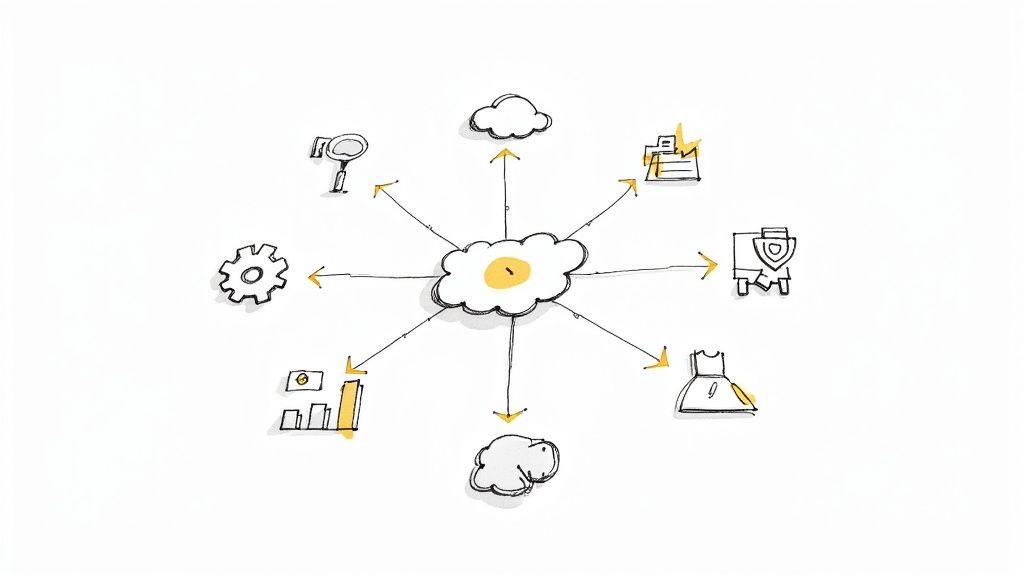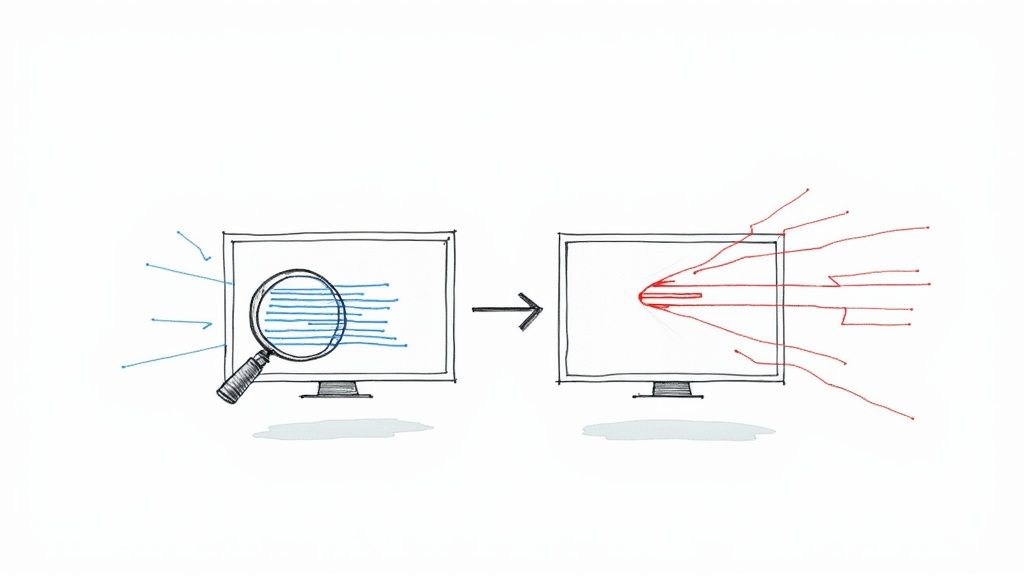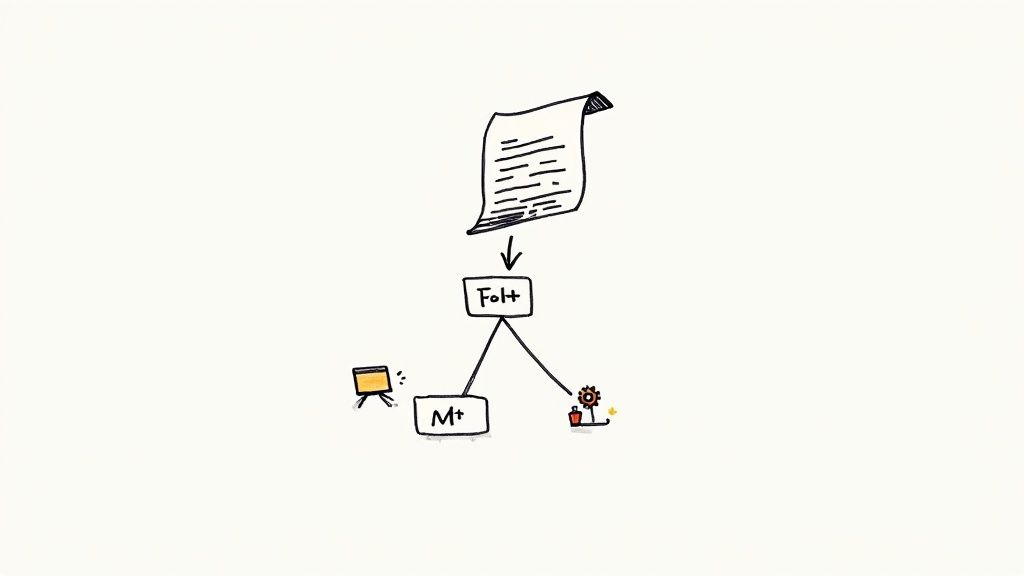How to Improve Developer Productivity: A Complete Guide for High-Performance Engineering Teams

Understanding the Modern Developer Productivity Challenge

Engineering teams are constantly looking for ways to help developers do their best work. The focus isn't on pushing out more code - it's about giving developers the space to work on meaningful projects that drive real business value. But what actually stops developers from reaching their full potential?
Identifying the Productivity Drains
Context switching is one of the biggest challenges developers face. When you're deep in coding and get pulled into an unexpected meeting, it can take 20-30 minutes to get back into that focused state. Similarly, approval bottlenecks create frustrating standstills - waiting for code reviews, deployment sign-offs, and other checkpoints before moving forward.
Time spent on routine maintenance tasks is another major issue. Developers often get bogged down with repetitive work like environment setup, dependency management, and infrastructure troubleshooting. These activities take away from core development work and slow down the entire team's progress. According to a recent Cortex survey, improving developer productivity was rated 8.2 out of 10 in importance. The study found that 58% of developers lose over 5 hours per week on low-value tasks, with 26% of that time split between gathering context and waiting for approvals.
Reframing Productivity for Sustainable Development
Making real progress requires rethinking how we measure and support developer productivity. Instead of just tracking individual output, we need systems that make the entire development process smoother. This means investing in collaboration tools, automating routine work, and removing roadblocks that slow teams down. When developers can focus on challenging, meaningful work without constant interruption, both code quality and job satisfaction improve.
Measuring What Matters: Beyond Basic Productivity Metrics
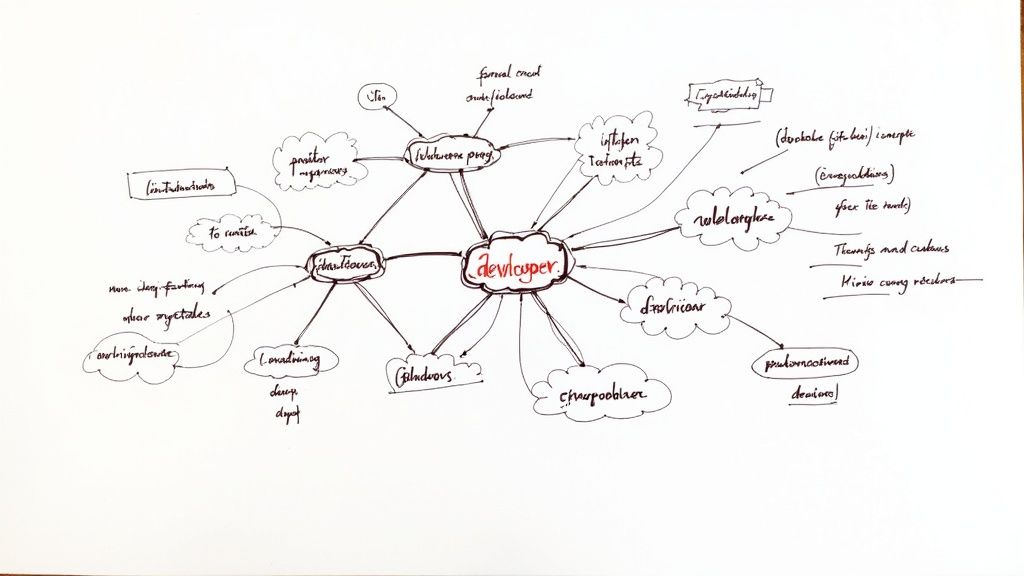
Measuring developer productivity requires looking beyond simple metrics. We need to examine both the measurable outputs and the human factors that enable developers to consistently deliver quality work. This means taking a closer look at the full development process, not just the end results.
Moving Beyond Lines of Code
Basic measurements like counting lines of code miss the bigger picture. A developer might produce thousands of lines that later need complete rewriting due to design issues. While the numbers look impressive, the actual value delivered is minimal. This shows why teams need better ways to measure real impact.
The software industry now relies on proven measurement frameworks like the DevOps Research and Assessment (DORA). The DORA approach tracks four key metrics: deployment frequency, lead time for changes, change failure rate, and time to restore service. These provide real insight into how effectively teams deliver working software. Learn more about DORA metrics and developer productivity here. Using these metrics helps promote behaviors that benefit the whole team.
Embracing Qualitative Data
The human side of development also shapes productivity in major ways. Things like how well the team communicates, works together, and maintains job satisfaction directly impact results. When team members collaborate smoothly, they can solve problems faster and avoid costly delays. You might be interested in: How Mergify Authors contribute. Both the numbers and the team dynamics tell the full story.
Implementing Effective Measurement Systems
Top companies now use measurement approaches that capture both hard data and team health indicators. Rather than just showing dashboards of metrics, they focus on insights that drive improvement. This means understanding not just what the numbers show, but why they look that way. With this deeper understanding, teams can spot opportunities to work better and make choices based on real evidence.
Using AI Tools to Improve Development Workflows

Software teams are discovering how AI tools can boost productivity and streamline their work. These tools go beyond basic automation - they're changing core development practices in meaningful ways.
Smart Code Generation and Completion
AI-powered code tools are reshaping how developers write code. Rather than manually writing every line, developers can describe what they want to build and let AI generate the code. This frees up mental energy for solving complex problems instead of looking up syntax or function references. Teams can ship features faster while maintaining their focus on design and architecture.
Better Code Reviews with AI
Code reviews often create bottlenecks, but AI can help speed things up. AI tools scan code to find potential bugs, security issues, and style problems automatically. This allows human reviewers to focus on bigger-picture concerns like system design. According to a Slalom study, teams using AI saw a 2.5x boost in code output while maintaining quality standards. 75% of developers reported working more efficiently with AI assistance. Learn more in Slalom's research on AI and developer productivity.
Smart Task Management
AI brings smarts to project planning too. These tools analyze code complexity, team workload, and project needs to suggest task priorities and optimal workflows. This helps developers stay focused on what matters most while reducing context switching. AI can also map task dependencies to prevent bottlenecks on complex projects. Related: Mergify's Blog Posts.
Adding AI to Your Workflow
To successfully use AI tools, teams need a clear plan. Consider how tools integrate with current processes, evaluate security implications, and measure impact on developer experience. The goal is to enhance developer capabilities, not replace human judgment. Finding the right mix of AI assistance and developer expertise leads to better outcomes.
Creating Efficient Development Workflows That Work
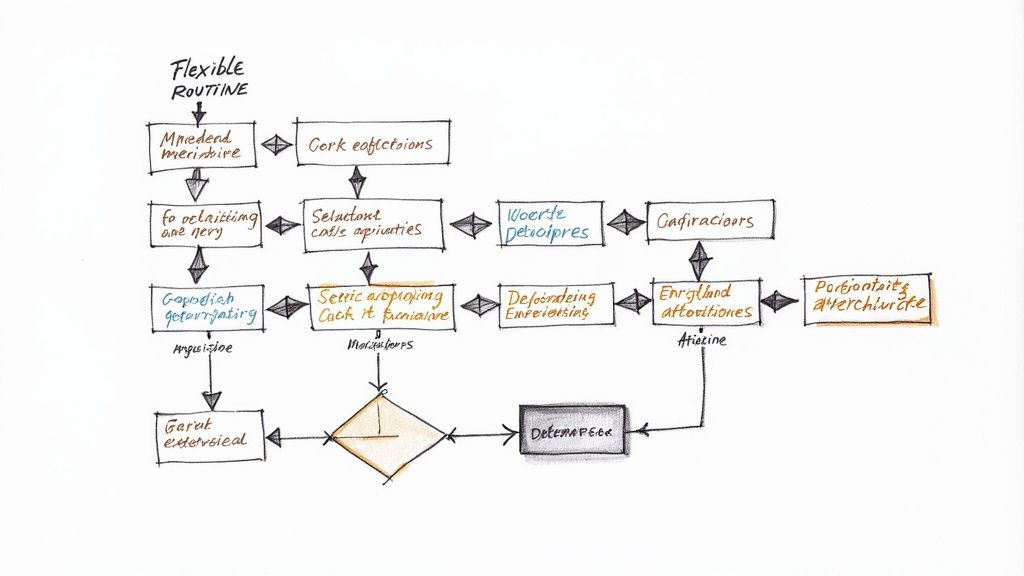
Let's look at specific ways to improve development workflows. By removing common obstacles and making processes smoother, teams can get more value from their tools and resources.
Protecting Developer Focus Time
Deep work is essential for developers to solve complex problems. Frequent interruptions from meetings, emails, and urgent requests can derail productivity. Some effective strategies include:
- Setting aside dedicated focus blocks
- Grouping similar tasks together
- Using async communication when possible
These approaches help developers maintain concentration and get into a productive flow state.
Making Code Reviews More Efficient
While code reviews are crucial for quality, they shouldn't slow things down unnecessarily. The key is finding the right balance. Here's what works well:
- Clear review guidelines and expectations
- Automated checks for basic issues
- Smaller, more frequent pull requests
Tools like Mergify can handle many review tasks automatically, helping teams move faster without sacrificing quality.
Reducing Manual Work Through Automation
Many development tasks are repetitive and don't need human judgment. Tasks like environment setup, testing, and deployments can be automated to free up developer time. CI/CD pipelines play a key role here by:
- Running tests consistently
- Deploying code reliably
- Catching issues early
- Reducing human error
Simplifying Approval Processes
Slow approval processes can really hold up development work. Teams can speed things up by:
- Using automated approvals where appropriate
- Making approval status visible to everyone
- Setting clear criteria for manual reviews
- Integrating checks into the CI/CD pipeline
This helps developers keep moving forward without unnecessary delays while still maintaining proper oversight.
Building a Culture of Sustainable High Performance
Creating a high-performing engineering team takes more than just the right tools and processes. Success comes from cultivating an environment that naturally boosts productivity while keeping it stable long-term. The focus needs to be on human factors: how teams work together, share knowledge, and maintain their energy.
Fostering Genuine Collaboration
True collaboration happens when team members authentically connect, not just when they share a meeting room or video call. The key is building an environment where people enjoy working together and feel comfortable sharing ideas. Some effective approaches include:
- Regular team check-ins to identify challenges early
- Project retrospectives to learn from successes and failures
- Clear communication channels that everyone can access
- Shared goals that unite the team's efforts
Enabling Effective Knowledge Sharing
When information gets stuck in silos, developers waste time searching for answers or rebuilding existing solutions. The solution requires:
- Building comprehensive, practical documentation
- Making knowledge resources easy to find and use
- Creating mentor relationships between team members
- Encouraging organic knowledge sharing through pair programming
- Regular technical talks and learning sessions
Maintaining Team Energy Levels
Developer burnout is one of the biggest threats to sustained high performance. Pushing for maximum output without breaks leads to exhaustion and lower productivity. To maintain healthy energy levels:
- Protect focused work time by limiting interruptions
- Allow async communication instead of requiring instant responses
- Encourage regular breaks and time off
- Support physical and mental wellbeing
- Monitor workload and adjust when needed
Real-World Examples of Cultural Transformations
Many companies have boosted productivity through cultural changes. For instance:
- Implementing "No Meeting Wednesdays" for uninterrupted focus time
- Creating peer recognition programs to celebrate achievements
- Setting up mentorship pairs between senior and junior developers
- Organizing regular team activities and social connections
These seemingly small changes can dramatically improve team morale and output quality. For more resources, check out our company blog.
Investing in Tools and Infrastructure That Drive Results
Development teams perform best when equipped with the right tools and infrastructure. Smart choices can dramatically increase efficiency, while poor tool decisions can slow teams down. Here's what successful companies focus on when choosing and implementing development tools.
Evaluating Tools for Maximum Impact
When picking new development tools, start by identifying concrete pain points in your workflow. If your team spends too much time on code reviews, choosing tools that partly automate reviews will give clear, measurable benefits.
Consider how long it will take developers to master a new tool. Even if a tool promises big long-term gains, a steep learning curve means reduced productivity while everyone gets up to speed. Factor in training needs and ongoing technical support costs. Compatibility with your existing tech stack is also key - tools that integrate smoothly reduce disruption and boost adoption.
Selecting the Right Tools for Your Team
Different teams need different tools based on their specific situation. A small startup of 5 developers has very different needs than a large enterprise with hundreds of engineers. Similarly, teams building complex systems with many dependencies need specialized tools for visualizing and managing those relationships.
Here's what to evaluate when choosing development tools:
| Factor | Key Questions |
|---|---|
| Pain Points | Which specific workflow issues will this tool fix? |
| Learning Curve | How quickly can the team start using it effectively? |
| Integration | Will it work smoothly with current tools and processes? |
| Team Size | Does it scale appropriately for your team? |
| Project Complexity | Does it handle your project's needs and constraints? |
| Development Process | Does it support your team's way of working? |
Implementing New Tools Effectively
Roll out new tools carefully and methodically. Start with a pilot program using a small group before expanding to the full team. This surfaces potential problems early. Invest in thorough training so developers can use the tool's full capabilities. The upfront training time pays off through better tool adoption and usage.
Keep communication channels open for questions and concerns during the transition. Track key metrics like code review time and deployment frequency to measure the tool's impact. Use this data to refine your implementation approach and confirm you're getting good value from the investment.
Streamlining Workflows for Optimal Efficiency
Look for ways to automate repetitive development tasks to free up time for complex work. Areas like environment setup and code deployment often have automation opportunities. Also examine how your team communicates and gets approvals - reducing bottlenecks here keeps projects moving. Regular workflow analysis helps create an environment where developers can focus on their best work.
Mergify helps development teams work more efficiently and optimize CI processes. Features like Merge Queue and Merge Protections automate pull request updates, manage CI batching, and maintain code stability. The CI Issues feature uses AI to identify and classify infrastructure problems, making troubleshooting faster.



